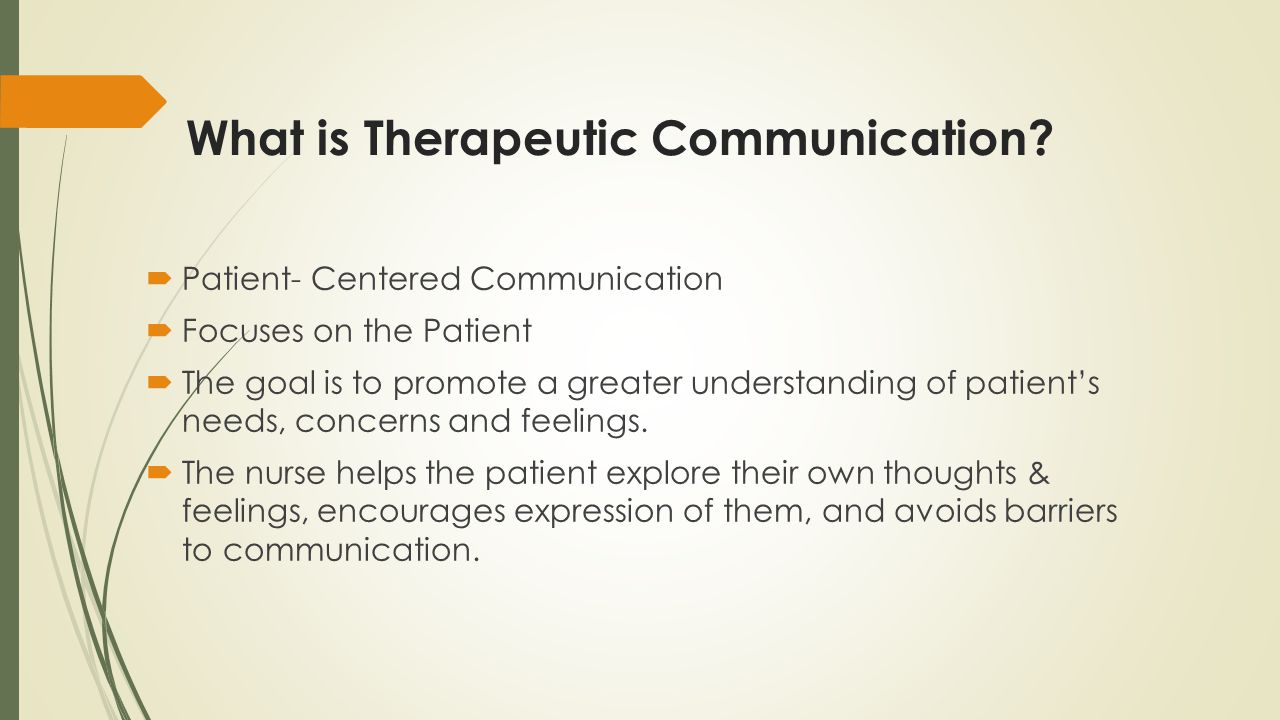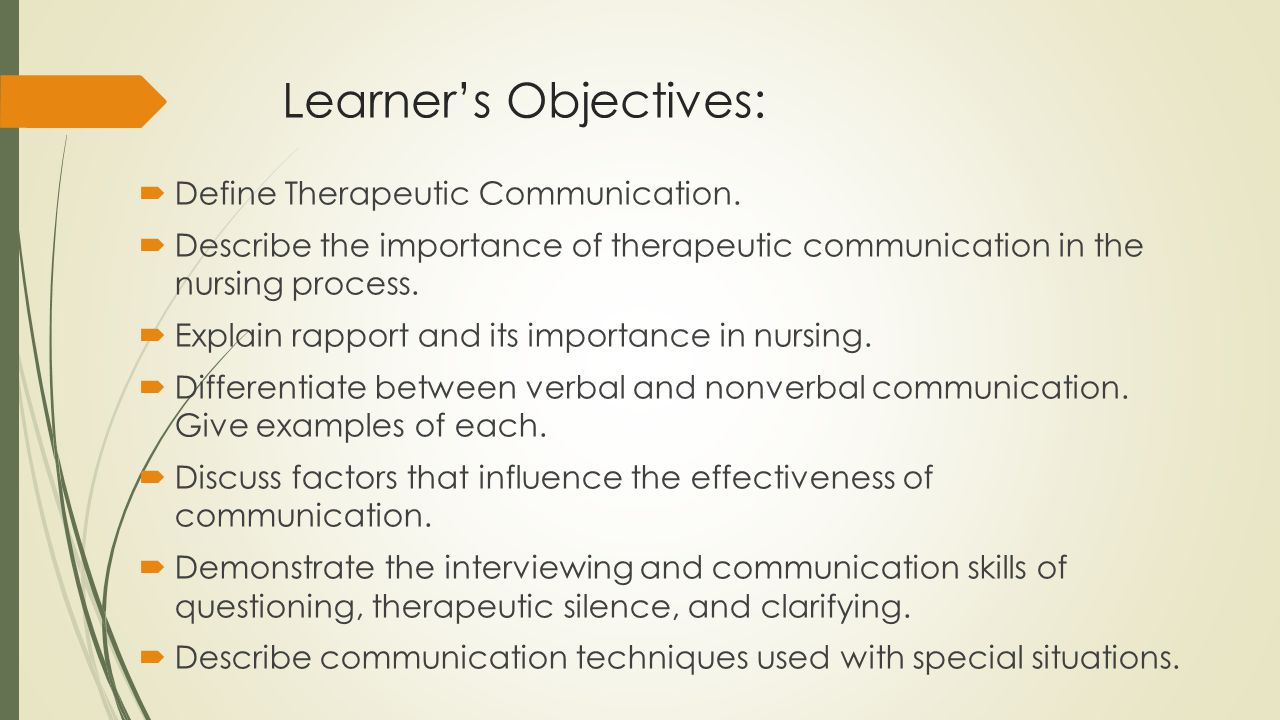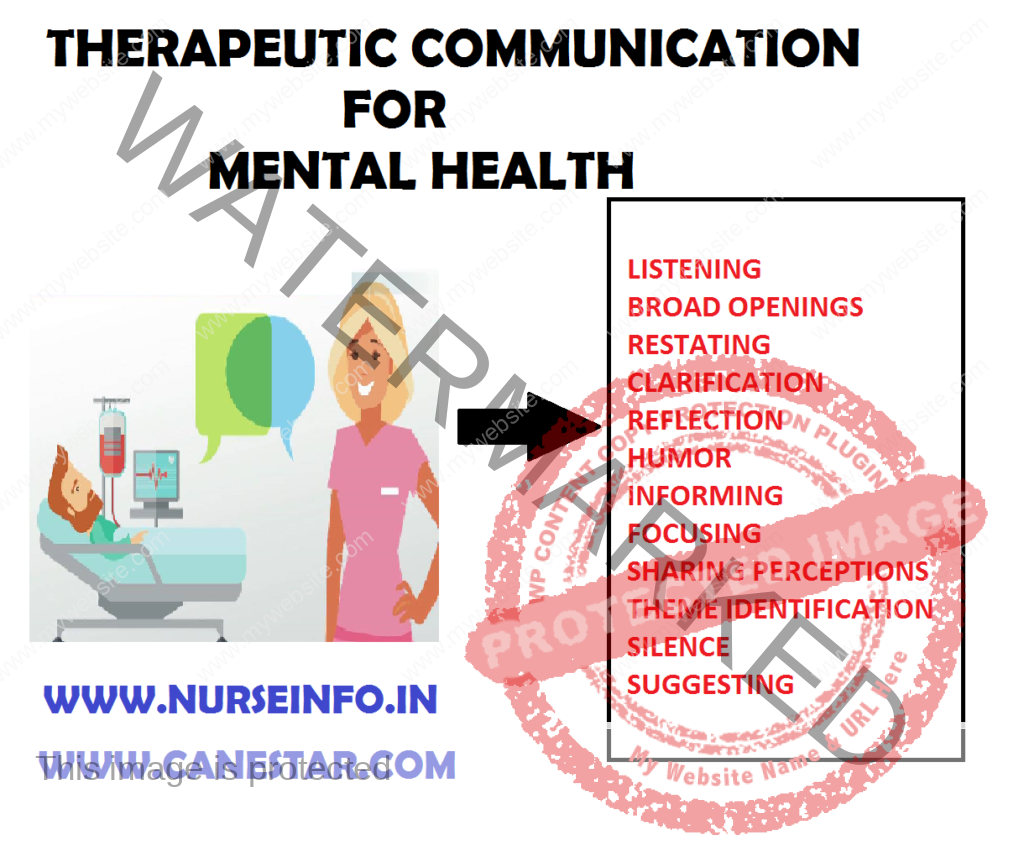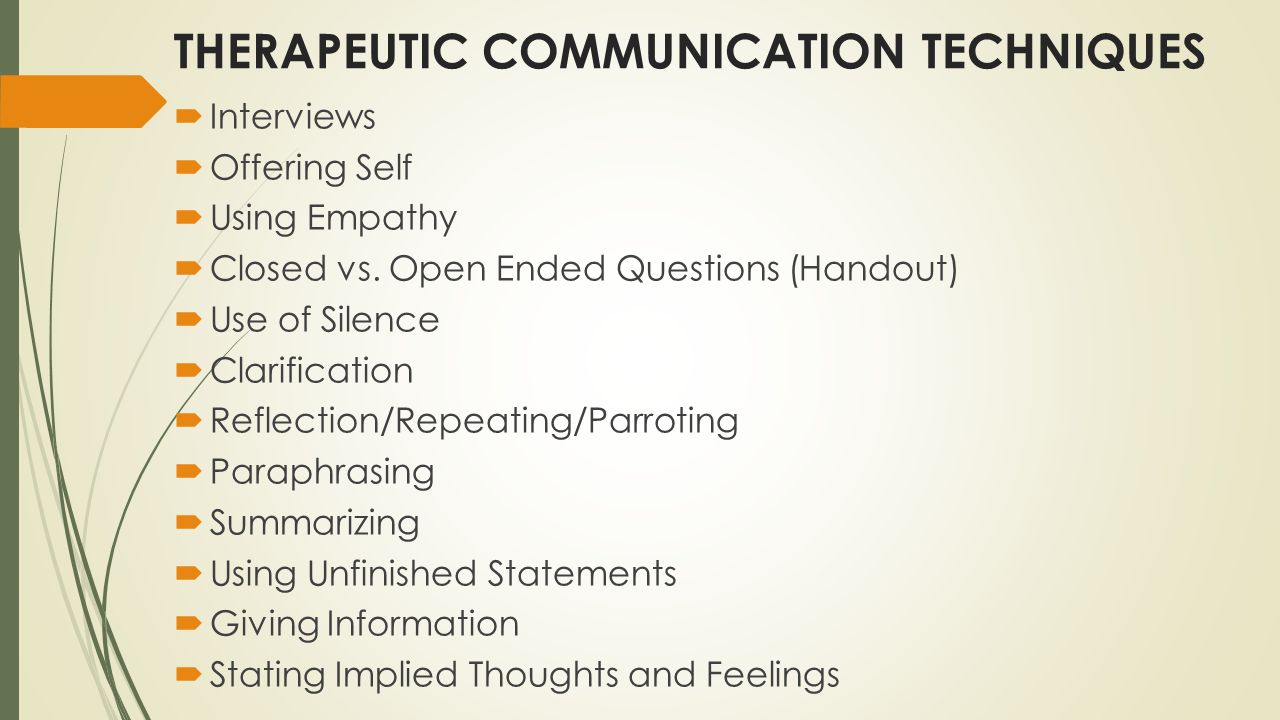Which of the Following Is an Effective Therapeutic Communication
NR341 Complex Adult Health RUA Interdisciplinary Management of Healthcare Technology Guidelines. Examples of effective therapeutic communication Ways to use non-verbal therapeutic communication Skills Practiced.

Therapeutic Communication Techniques Nursing Techniques Of Therapeutic Communication Technique Studocu
Therapeutic communication techniques such as active listening silence focusing using open ended questions clarification exploring paraphrasing reflecting restating providing leads summarizing acknowledgment and the offering of self will be described below.

. The human face produces the most visible complex and sometimes confusing nonverbal messages. Recognizing the impact of communication on others. You are assessing a 75 yr old with mild shortness of breath.
To that end giving patients a broad opening such as Whats on your mind today or What would you like to talk about can be a good way to allow patients an opportunity to discuss whats on their mind. Examples of effective therapeutic communication techniques making observations being silent and accepting which of the following relate to facial expression eye contact posture touch and attention to personal space. 1 encourage the client to speak.
Non-verbal communication such as the nurses gait posture facial expressions the tone of voice eye contact and hand body movement also contribute towards an effective therapeutic communication. Which of the following is an example of an ineffective therapeutic communication. Silence is a therapeutic communication technique that is also very helpful when the nurse wants to give the client ample time to fully and openly discuss their feelings opinions and beliefs however prolonged silence may be interpreted by the client as a lack of interest on the part of the nurse so silence in order to remain therapeutic must be of an appropriate.
Terms in this set 25 Effective therapeutic communication skills require ___. Implementing barriers to effective communication. The student will demonstrate clinical.
Ensuring that verbal and non-verbal messages are incongruent. Actively listening with good-eye contact. In this scenario it is important to.
Using statements or questions that. This purpose of this assignment is for the student to present a complete picture of interdisciplinary care using specific therapeutic modalities in the care of a complex adult health client. I will walk with you 2.
Therapeutic communication as a concept emerged early in medicine and has since shown significant benefits borne out in research. Accepting pauses or silences that may extend for several seconds or minutes without interjecting any verbal response. Giving approval Body language includes facial expressions eye contact posture attention to.
Facial movements connect with words to illustrate meaning. Making observations about non-verbal cues to help a patient express any hidden anxiety. This connection demonstrates the.
Therapeutic communication is often most effective when patients direct the flow of conversation and decide what to talk about. Two of the earliest reported cases of therapeutic communication which primarily involved the idea of the therapeutic relationship and the benefits of such a relationship were documented during the moral treatment era of. Therapeutic communication techniques Providing general leads.
Maintaining eye contact and making verbal remarks to clarify and encourage further communication. As you are asking questions regarding her chief complaint and medical history you progressively move closer to her. Verbal and nonverbal communication techniques.
Making self-available and showing interest and concern. Paying close attention to what the patient is saying by observing both verbal and non-verbal cues. Therapeutic communication also involves nonverbal communication is behavior that a person exhibits while delivering verbal content.
Which of the following is an example of effective therapeutic communication. Specific techniques in therapeutic nursing include giving supportive remarks providing rewards or gestures of approval and offering their presence according to Effective Communication in.

Therapeutic Communication Ppt Download

Therapeutic Communication Ppt Download

Therapeutic Communication Ppt Download
Therapeutic Communication Skills Client Care Nursing Part 1

Teaching And Evaluating Therapeutic Communication In Simulated Scenarios Nurse Key

Therapeutic Communication Principles Or Characteristics Techniques And Non Therapeutic Communication Nurseinfo

Therapeutic And Non Therapeuitc Communication Techniques


Comments
Post a Comment